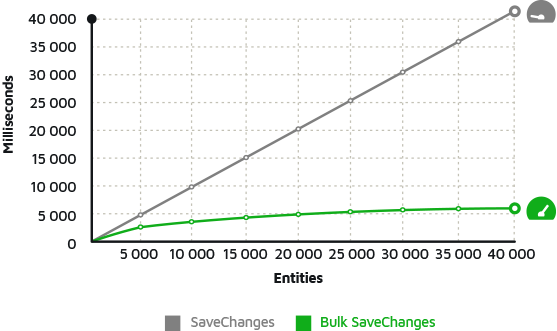Entity Framework SaveChanges Discover How to Save Entities in a Database
In Entity Framework, the DbContext.SaveChanges method saves all changes made in the context of the database.
- You can add, modify, and remove data using your context and entity classes.
SaveChangesmethod automatically callsDetectChangesmethod to discover any changes to entity instances before saving to the underlying database.
Adding Data
To add data to the database, you can use the DbSet.Add method to add new instances of your entity classes, and then call SaveChanges.
using (var context = new BookStore()) { Author author = new Author() { FirstName = "Mark", LastName = "Johny", }; context.Authors.Add(author); context.SaveChanges(); }
Updating Data
When you make changes to any existing entity, or simply modify the values assigned to properties and then call SaveChanges, it will update the data into a database.
using (var context = new BookStore()) { var author = context.Authors .FirstOrDefault(); author.LastName = "Cuban"; context.SaveChanges(); }
Deleting Data
You can use the DbSet.Remove method to delete instances of your entity classes.
- If the entity already exists in the database, it will be deleted during
SaveChanges. - If the entity has not yet been saved to the database, then it will be removed from the context and will no longer be inserted when
SaveChangesis called.
using (var context = new BookStore()) { var author = context.Authors .Where(a => a.AuthorId == 2) .FirstOrDefault(); context.Authors.Remove(author); context.SaveChanges(); }
ZZZ Projects
